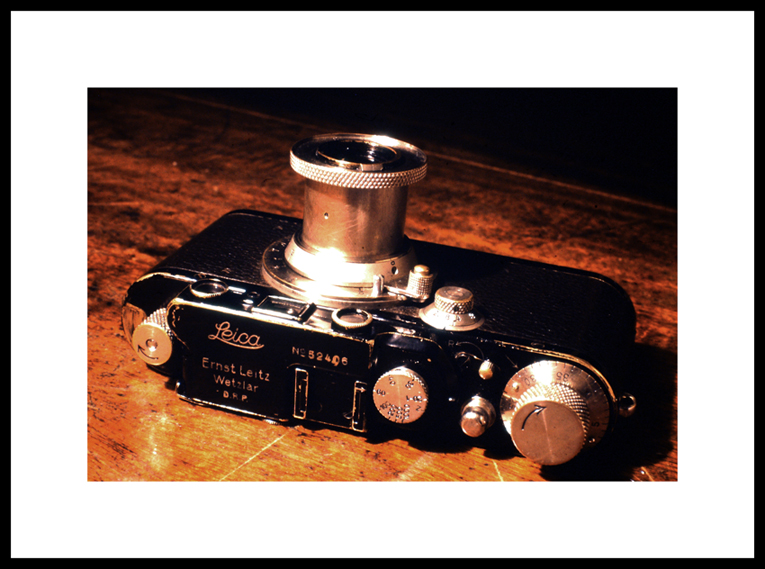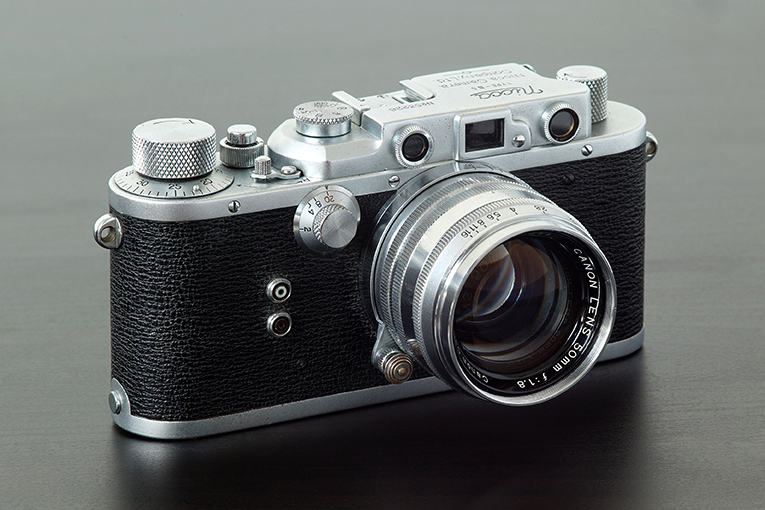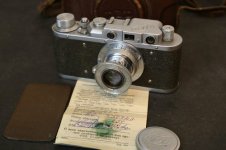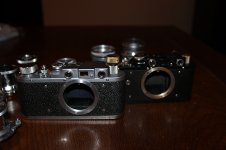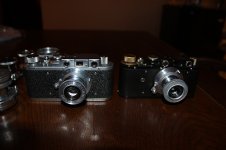rfaspen
[insert pithy phrase here]
Hey, let me add to the confusion....
Here is my "Kombinat" of 1939 with its matching lens (I should say I assume it is the matching lens: came with the body and images come out focused). Note the resting position of the tab at infinity. I know I mentioned it was at 11 o'clock in an earlier post. I was wrong. Now what? Also note that when the lens is focused at 1 meter the tab is in a very inconvenient location.
A quick glance at internet images of matched unstandardized early Feds show only lenses with the infinity rest position in locations we would expect them: from about 11 o clock to maybe 7 o clock.
So now I'm just plain overwhelmed and I can't explain nuthin. Its a neat old camera to look at and hold, but I rarely use it. Now I wonder if its even the correct matching pair. The images I've made with this seem in focus, but not necessarily perfect. Mismatch of early kit? Who knows. My brain hurts.

My Leicas behave much better in this respect 😀. None of this inexplicable squirrelly business. Not that they don't offer a head-scratcher now and again, but early FSU is really mysterious. Shall we call this "fun"?
Here is my "Kombinat" of 1939 with its matching lens (I should say I assume it is the matching lens: came with the body and images come out focused). Note the resting position of the tab at infinity. I know I mentioned it was at 11 o'clock in an earlier post. I was wrong. Now what? Also note that when the lens is focused at 1 meter the tab is in a very inconvenient location.
A quick glance at internet images of matched unstandardized early Feds show only lenses with the infinity rest position in locations we would expect them: from about 11 o clock to maybe 7 o clock.
So now I'm just plain overwhelmed and I can't explain nuthin. Its a neat old camera to look at and hold, but I rarely use it. Now I wonder if its even the correct matching pair. The images I've made with this seem in focus, but not necessarily perfect. Mismatch of early kit? Who knows. My brain hurts.

My Leicas behave much better in this respect 😀. None of this inexplicable squirrelly business. Not that they don't offer a head-scratcher now and again, but early FSU is really mysterious. Shall we call this "fun"?


